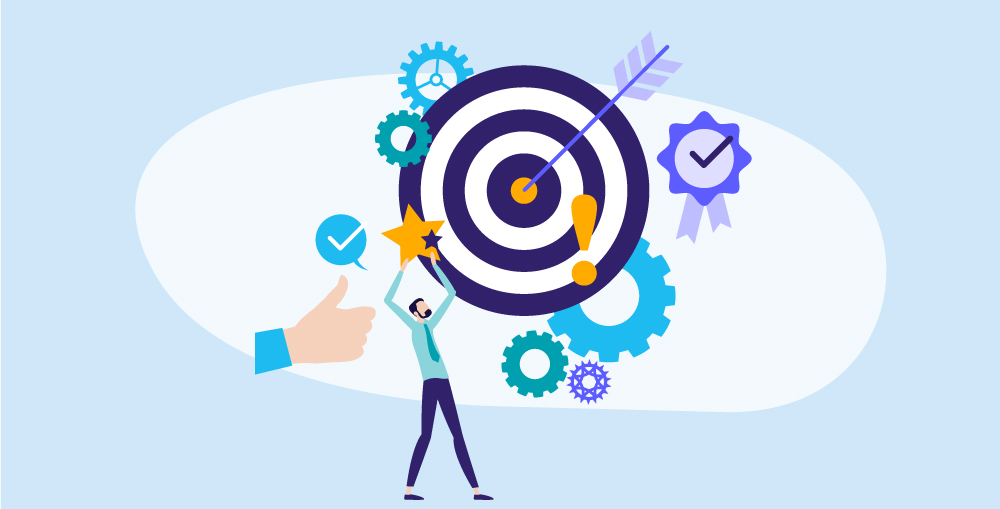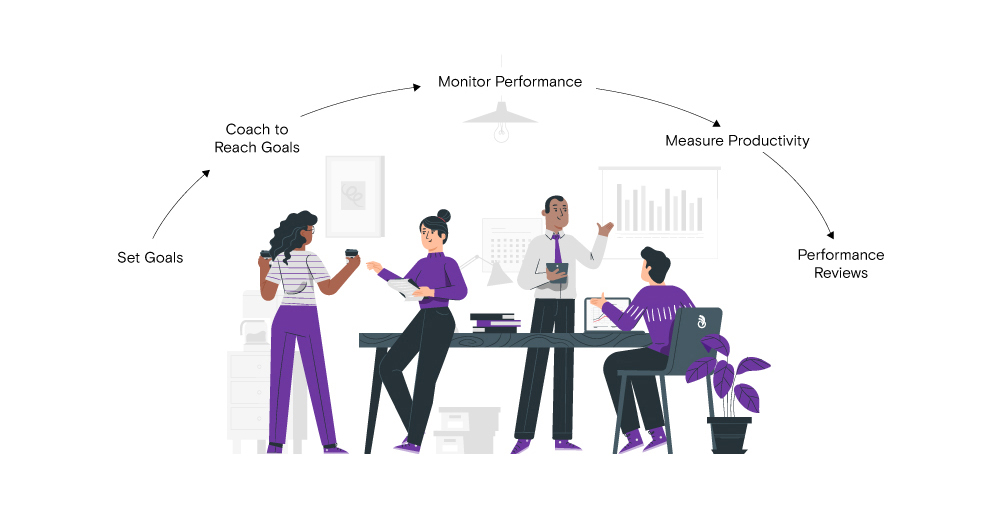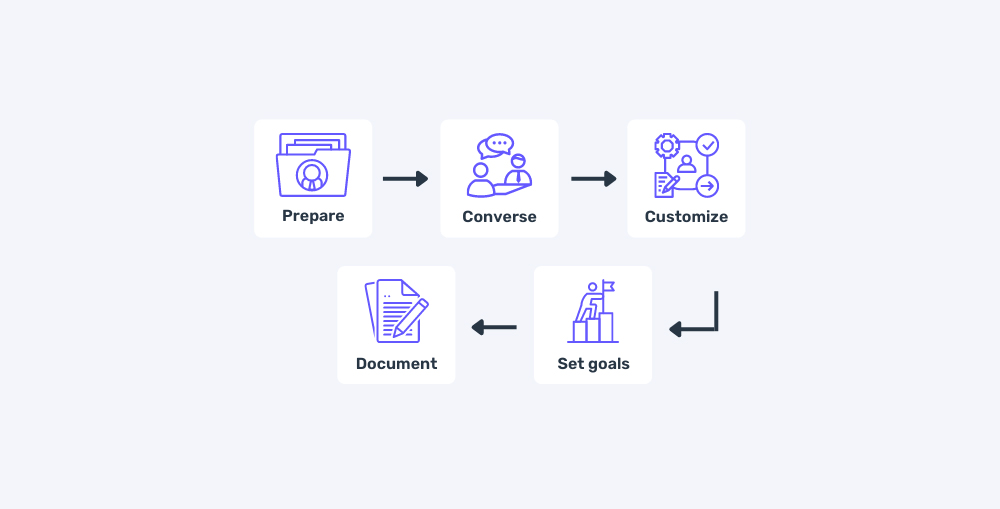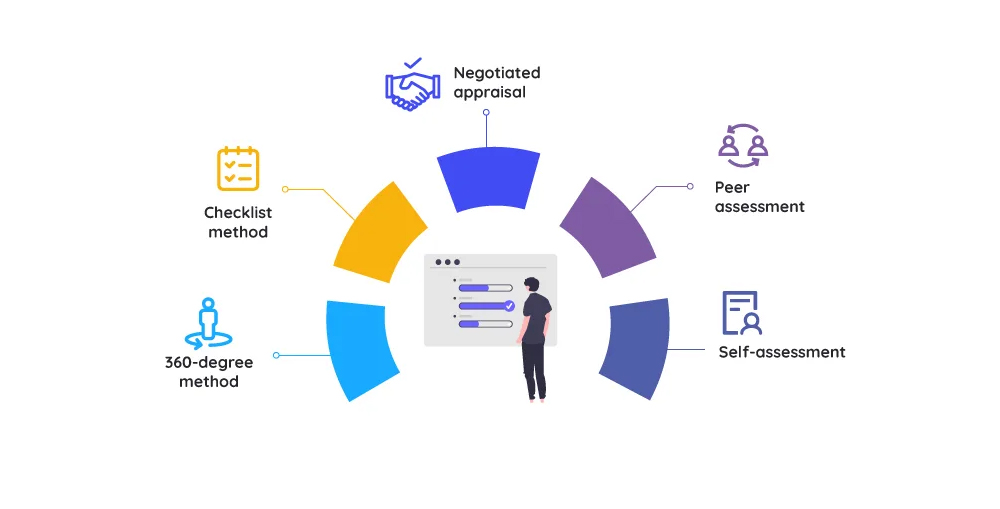The performance appraisal is a crucial aspect of performance management, businesses are proactively seeking ways to maximize their performance. Traditionally the performance appraisal is a once in a year exercise associated with a lot of paper work, yearly meetings, and little bit of frustration. Both the managers and employees felt the pressure during the appraisal process. However, things have changed rapidly, businesses have started adopting more modern and advanced performance appraisals systems to boost the performance and employee engagements. Since past decade we have witnessed a wide-scale adoption of modern performance appraisal methods and systems all around the world.
Businesses in UAE are also rapidly adopting to modern performance management trends. In this blog we will discuss how a modern performance management system can greatly elevate your performance management process. The modern software-based performance management systems digitalize the process, offer advanced data collection tools, and boost employee engagements and satisfaction. The modern workforce have different priorities and require a completely different performance management approach. This is why the traditional annual reviews and performance appraisal systems are failing, compelling businesses to embrace the innovation and automation.

The Evolution of the Performance Appraisal System
The traditional performance appraisal system focuses on annual reviews majorly focused on hierarchal feedbacks, which proven to be ineffective for the modern workforce. The major reasons of its failure are the revolutionary change in the workforce behavior alongside rapid and sudden changes in the business landscape. Businesses started realizing that they need a more frequent and continuous performance assessment framework which is very responsive and it aligns with the modern workforce mindset. Now a days businesses are more focused on continuous feedback and real-time assessments which led to real-time development and improvements.
See Also: Why Organizations need Performance Appraisal System in UAE
Moreover the one-size-fits-all approach also faded away, as businesses have realized that this method is no longer fruitful. Instead of that businesses started adopting personalized and robust assessment methodologies that are flexible and harmonious with individual employee needs and goals. Instead of appraisals being an annual event the modern performance appraisal system offers a bi-weekly or monthly assessments and a continuous feedback framework which keeps employee engaged and promote a highly collaborative and highly efficiency development system. The regular check-ins are a great way to discuss ongoing progress, give constructive feedback and align employees with organizational goals and objectives.

1. The Blend of Modern Strategies and Technology
The technology is the backbone of the modern performance appraisal system, it completely revamped the entire process making it more efficiency and effective. A technology infused performance appraisal system is built around a performance appraisal software or performance management software (PMS). From integration of AI (artificial intelligence) and smart analytical algorithms to advanced real-time data collection tools, businesses are embracing the power of technology to elevate performance appraisal process which ensures highest levels of efficiency and accuracy. The modern performance appraisal systems offer intuitive online platform where the both managers and employees can access to the relevant performance data in real-time enabling them to take actions, when and wherever needed.
See Also: Characteristics of a Good Employee Appraisal System
These tools can greatly enhance the efficiency and eliminate the tedious paperwork from the process. Businesses can not only automate several administrative tasks but they can also get real-time updated data to understand various employee performance trends and deeper insight. This insight helps them identifying the area of improvements and taking timely actions to keep everyone on track towards achieving high-level organizational goals and objectives. Furthermore the modern performance appraisal system software are super-accessible, employees and managers both can access the system from online or even via their mobile phones. The self-assessment tools, advanced skill development modules and accurate KPIs can significantly improve the accuracy, efficiency and impact of the system.

2. Shift towards Continuous Feedback and Focus on Employee Alignment
The traditional performance appraisal system lacks two major and most crucial factors, one is frequency of the feedbacks, in fact it only has once a year feedback and assessment system and the other most important aspect is the inefficient and ineffective approach towards employee alignment with their individual goals and in long term towards the high level organizational goals and objectives. The traditional annual reviews and feedbacks are prone to develop a gap and disconnect between the employees and the managers which results in delays in feedbacks and actions. Once a year feedback couldn’t course correct and align employees with their goals, however, the course correction and addressing to performance hindering issues is required in real-time.
See Also: How to Develop Custom Performance Appraisal System in UAE?
The bloodline of performance management and main objective of appraisal process is to align individual employee’s goals with high-level organizational strategic objectives. The annual appraisal reviews and feedback lacks this connection which results in disengagement of employees from the high-level strategic goals and objectives. This requires intense communication and a strong bond between the managers and the employees. A modern performance management system promotes communication, continuous feedback and give ownership to employees boosting engagements and cultivating a culture of collaboration, communication and collective growth. The modern performance appraisal system ensures every employees clearly understand their goals, success parameters, and how their goals and work will contributes to the higher-level organizational goals and strategic objectives.

3. Shift from Fixing the Weakness towards Focusing on Strength and Development
The primary focus of the modern day performance appraisal system is not focusing only on the past performance but it also has to be a catalyst for the growth, development and improvements in the future. Now a day’s businesses are more focused on employee development and retention. This help businesses gradually grow their workforce and skillset to build strength which drive performance and efficiency. Another most important and impactful advantage of the resent day employee appraisal system is to give ownership to the employees and empower them to shape their development journey. This system gives employee power, resources, support and tools to build strength, identify their weaknesses and focus on learning and continuous development.
See Also: Modern Methods of Performance Appraisal
Businesses need to build and retain a skillful workforce that can improve operational efficiency and help businesses achieve their goals and drive long-term sustainable success. The managers can leverage the inbuilt advanced tools to identify the strengths and weaknesses of the individual employees with contextual performance insights. This insight is crucial in further enhancing the employee’s skills to make them more productive and fruitful for the organization. This also help businesses and HR leaders to take informed investment decisions in development programs which help businesses build a resilient workforce which ensures high-quality products/services and satisfactory customer experience.

4. Flexibility and Data-Driven Insights
In today’s modern market landscape businesses have to be very vigilant and proactive towards the rapid market changes emerging needs. This demand agile performance appraisal and data collection system which is flexible enough to enable businesses to make instant adjustments. This helps businesses align with the emerging needs and help them to be more responsive towards rapidly changing market trends. This is only possible when the business leaders and managers have highly accurate performance data and critical insights which help management identify trends, correlations and patterns which help making more accurate and informed strategic decision to improve the performance.
See Also: 5 Challenges to face if Performance Appraisal is not customized as per Organization’s Policies
Furthermore the performance appraisal system is a software based solution which enable businesses to customize their performance management system to accommodate their unique business needs and to deal with unique challenges they face. The ability to customize the performance parameters, goals, KPIs, and even the entire framework help management proactively take actions to respond to the rapidly evolving trends, customer demands, and needs. This also prepare businesses to deal with unprecedented and unexpected situation while minimizing or eliminating the disruptions. Whether it is adjusting to the goals, assessment criteria, feedback and review process or integration of the new technologies, the inherent flexibility and customization of the performance appraisal system helps businesses deal with challenges with no or minimum disruption in progress.

5. Performance Beyond Numbers – Accountability with Transparency
Traditionally the performance appraisal was focused on KPIs and achievements, lacking contextual analysis and behavioral competencies. However, the modern performance appraisal system is measuring performance beyond numbers, and recognizing the importance of accountability with highest transparency. Businesses have realized that achieving goals is important but there are several other personality traits and qualities which also plays a crucial role in overall performance as well as fostering a high-performing and engaging organizational culture. Here are a few most important qualities:
- Teamwork and Collaboration: Today’s work environment demand higher collaboration and teamwork in order to effectively achieve the strategic objectives.
- Adoptability: Today’s market landscape is driven by technology and the technology evolves rapidly furthermore the customer demands and market trends are also subjected to change quickly, therefore it is crucial for an employee to be able to adopt to emerging changes.
- Ethics and Responsibility: A modern day employees should have to be ethically strong and they should exhibit exceptional ability to take ownership, responsibility and initiatives. This will make them a valuable asset for the organization.
- Creativity and Innovation: Businesses are always facing challenges either with emerging needs, or rapid advancement in the industry, therefore an employee with higher level of problem solving skills and a creative and innovative mindset to bring new ideas to the table.
See Also: How to Design a Modern Performance Management System?
The KPIs, OKRs, and the evaluation based on above qualities and other such qualities will help businesses and organizations to build a performance appraisal framework which can precisely evaluate the true potential and abilities of an employee.
The accountability and transparency is the soul of an employee performance appraisal system. This is also one of the biggest reason why business leaders and organizations are adopting to modern performance appraisal system and methodologies. The traditional performance appraisal system lacks transparency and is prone to biased evaluation furthermore the insufficient performance data also hinder the transparency and cause lack of trust on the system. The employees are more concerned about transparency, fair evaluation, clear evaluation criteria, performance expectations and clarity in goal and objectives. This is only possible with modern performance appraisal system, continuous feedback, 360 degree feedbacks, customizable performance dashboards, and various other advanced analytical and data collection tools to promote fair accountability and transparency in the system.
See Also: The Role of Performance Management in Employee Engagement

6. More Focus on Reward and Recognition
The employee motivation is one of the most crucial factor contributing to the entire performance of the organization. If the employees are rewarded for their performance and their achievements are adequately recognized and well-appreciated, they tend to perform better. A regular annual raise or bonuses are not enough, businesses are finding more creative ways to reward and recognize their employees such as:
- Public Recognition: Public recognition is one of the best way adopted by modern organizations to appreciate their employees. When employees are appreciated publicly either in marketing, social media, newsletter or internal meetings, it will not only boost their morale but it will also result in inspiring and motivating others.
- Development Opportunities: The learning and development opportunities are a great way to raise employee retention and to boost employee skills which eventually contributes to improving performance. Employees who doesn’t found enough learning and development opportunities they feel their growth is limited and are tend to leave the organization.
- Fair Reward Process: Fairness in the reward process is crucial, the employee who is rewarded must know on what criteria he or she is rewarded and the other employees must also know what he or she did exceptionally which make them eligible for this particular reward. The fairness and transparency is crucial for keeping everyone’s morale high.
See Also: What are the Features of a Best Performance Management System?
The fair and transparent reward and recognition program can greatly benefit both employees and the business by fostering a culture of appreciation and encouragement. Furthermore the modern employee performance appraisal system provides a systematic framework for communication which helps employees understanding their goals, business’s expectations, performance criteria and it is also very helpful in strengthening the relationship between the managers and employees which itself is a great way to increase employee engagements and boost the organizational performance.

Conclusion
Traditionally the employee performance appraisal process comes with a lot of paperwork, efforts, and some frustration as well. Furthermore the traditional performance appraisal system also fell short of meeting the modern need of performance management and the accuracy of the process is also questionable. Therefore businesses are now adopting to modern performance management and appraisal practices alongside software aided solutions. The modern performance appraisal system comes with a comprehensive software application which not only digitalize the process but also help automating it and offer many additional benefits which enable businesses to conduct more frequent evaluations, even project-based evaluation and bi-weekly assessments are also effectively done through it.
The modern performance appraisal system offer continuous feedback loop, communication framework, goals and objective setting facility, highly accurate KPIs monitoring tools, real-time performance data collection, personalized assessment methodologies, and specialized tools to focus on reward and recognition while boosting transparency, accuracy and efficiency. Furthermore the modern performance appraisal system also focus on higher employee alignment with organizational goals and strategic objectives. This helps businesses achieve their long-term goals and sustainable success.
Furthermore the modern performance appraisal system also focus on fostering highly collaborative organizational culture which not only boost communication but also help businesses keep employees more engaged and proactive. Businesses also want to achieve higher employee retention which is only possible when the organizations are able to identify the areas of improvements, employee problems, their needs and expectations. In this blog we have discussed how the future of performance appraisal will look like in the coming years. If you want to learn more about the subject or if you want our help to design and deploy a modern and customized employee performance appraisal system exclusively designed to meet your unique business need, please feel free to contact us through our Contact Us page or leave a comment in the comment box below and we will get in touch with you soon.
See Also: How Performance Management Impact on Organization’s Culture?













